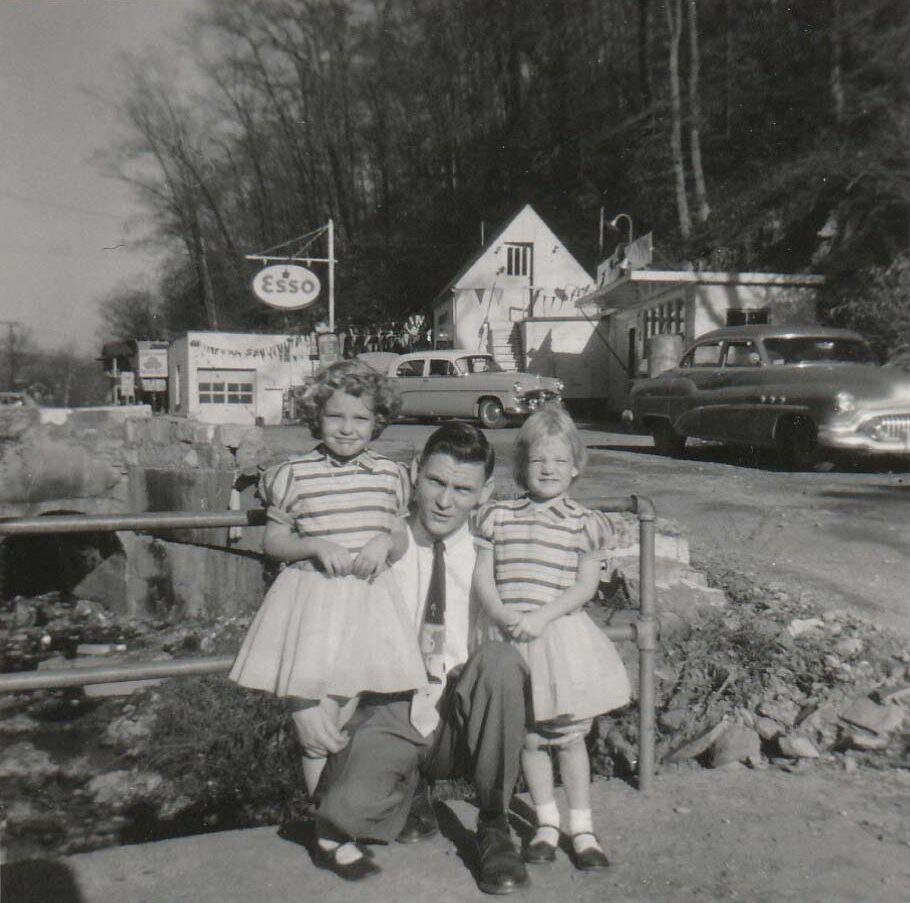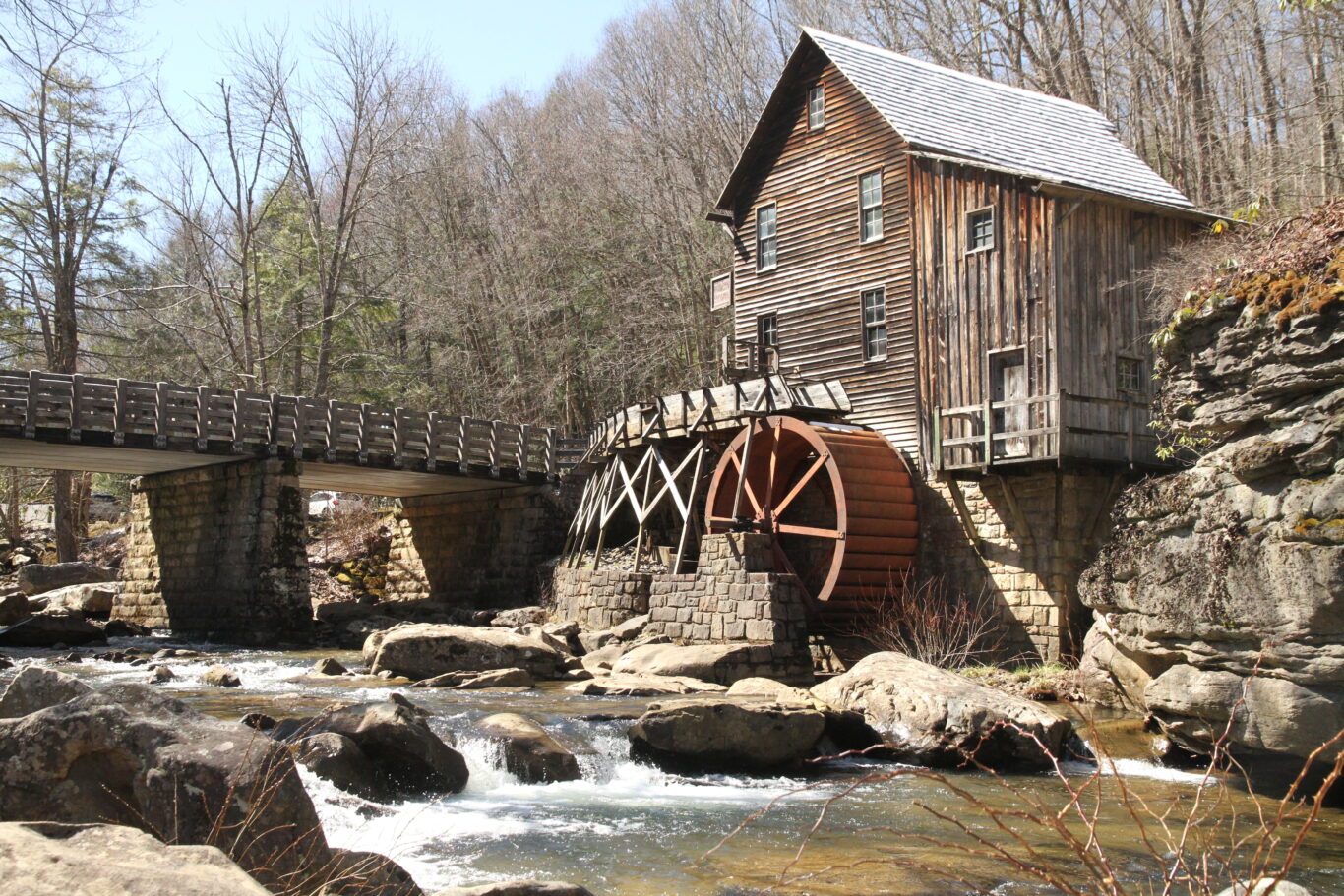By Sharon Smith
The key to transforming a dream into reality is taking determined action toward it. Monongalia County native Robert “Bob” Phillips dared to put action behind his dream, elevated it into a tangible useful product, and for a period in the early 1960s achieved notable success with his invention.
Robert Lee “Bob” Phillips was born in Blacksville, located in western Monongalia County, on July 21, 1924, the son of Marion and Bertha Gregowski Phillips. He was the fourth of seven sons, six of whom lived to adulthood. The family experienced a great loss in 1939 when Marion Sr. died unexpectedly at the age of forty-four. The boys’ ages ranged from nineteen to four at the time. Their mother Bertha was a hard-working, industrious woman, and she met the challenge of raising the boys on her own.
Bertha began working at the town cannery which was near the family home in Blacksville and, at some point, was put in charge of the cannery. There she helped process USDA food to feed neighbors, school kids, and the elderly. The community cannery concept originated as a result of the 1934 Food Conservation Program that was implemented during the Great Depression as part of the Works Progress Administration (WPA).

Bob graduated from Clay-Battelle High School in May 1942, a time when the nation was becoming fully engaged in World War II. As his three older brothers had done before him, Bob joined the Navy a few months after graduation. The four Phillips brothers were all on duty in the South Pacific. Bob was a crew member on the U.S.S. Dixie. The Dixie’s task was to service destroyers in, or near, battle areas and to keep them fit for duty. Bob spent time in Okinawa and Shanghai where the Dixie served ships on occupation duty. Younger brother Byron also joined the Navy when he turned eighteen in 1945 and was on his way overseas when the war ended. The brothers liked to joke that the war ended because Byron was on the way.
Bob was honorably discharged from the Navy in March 1946. The following year on October 5, 1947, he and Mabel Carpenter were married in a ceremony that took place in the Spruce Street Methodist Church in Morgantown. He and Mabel had three sons—Robert Alexander in 1948, Joseph David in 1950, and Jeffrey Lee in 1956. Bob joined the Sheriff’s force in Monongalia County in the late 1940s where he served as Deputy Sheriff and Court Sheriff (bailiff). After a few years, he decided to change careers in order to build a more sound future for himself and his growing family. In his application for a position as a life insurance agent, Bob stated that he personally knew how much it meant to have protection for loved ones should the wage earner of the family die. Bob went on to become a successful representative for New York Life Insurance.
Mabel Phillips clearly remembers the morning in 1959 when her husband Bob rushed downstairs telling her that he had a dream that night and would explain it to her later. But first, he had to discuss it with his friend Harley Sheets. In his dream, Bob envisioned a machine that would transport disabled people up and down stairways. He saw the machine clearly and how it would work, at least externally—he was no mechanic, that’s why he took his idea to Harley. Harley Sheets at that time owned an appliance and repair shop in Morgantown, and he worked with mechanics and electricity as a hobby. He enjoyed taking machines apart and putting them back together. Bob described his idea to Harley as a portable stair climber, a kind of endless-track tractor that would take people up and down steps. He visualized it as being used especially by airlines. Harley agreed that he would try to put it together.


In the 1950s commercial air travel was a much different experience from that of today. Known as the “golden age of travel,” the period is fondly remembered for its glamor and luxury. Entering and exiting an airplane in this era involved a walk across the tarmac and a climb up or down a flight of movable stairs. This was fine for passengers who were agile but was a problem for a person who needed assistance in climbing stairs. Bob’s idea offered a solution to this real-world problem. Every day after work the two friends went to the basement of Bob’s house to plan and tinker, and within a year the two had patented a powerful little stair climber. They called their machine the “Stepulator” and began producing it in a small brick building on East Brockway Avenue in Morgantown. They named their business the S&P Manufacturing Company.
In 1964 William C. Blizzard of the Charleston Gazette interviewed Bob and Harley and published this description of the Stepulator:
The Stepulator, which weighs less than 200 pounds, looks very much like a tiny military tank, with two endless tracks of thick-treaded rubber running on 40 little wheels, 20 to a side. At the back of the little machine is a seat, complete with safety belt, which resembles an office swivel chair. This swivel seat is connected to a motor which automatically keeps the seat and passenger level while ascending or descending stairs. To operate, the passenger climbs, or is placed, aboard the Stepulator, which has been positioned in front of an inclined “starter platform” leading a short way up the stairs to be ascended. The passenger’s back is in the direction of travel, in the manner of that legendary bird which wants to see where it’s been and doesn’t care where it’s going. The handicapped rider then presses a button to start his climb. This button is on the end of a long cord, like the controls of some mechanical toys. Using this button, you start, stop, or reverse the Stepulator, so that you are in control of your own destiny while making your ascent. A safety device stops the Stepulator at the apogee of its trip, so that it cannot tip backward or injure or jolt the passenger.
While Harley was the engineer who deserves the credit for putting the machine together, Bob had the major task of introducing the Stepulator to potential buyers. As an insurance executive, he was an old hand at sales. Bob traveled over 60,000 miles a year setting up displays all over the United States. He promoted the machine for homes, public buildings, churches—any place where there were steps, he felt he had a market. When asked how he went about selling the Stepulator, Bob said he stressed two points—portability and cost. He pointed out that elevators and their installation cost a lot, and once in place, were there to stay. The cost of the Stepulator was modest in comparison and could easily be moved from place to place. There was a DC model, operating from a 12-volt automobile battery, which could be recharged weekly. It was the more expensive model which sold for $1,495. The AC Stepulator cost approximately $500 less. There was also a design modification available that accommodated a wheelchair which cost about $250 more than the standard seat.
“Every day after work the two friends went to the basement of Bob’s house to plan and tinker, and within a year the two had patented a powerful little stair climber. They called their machine the “Stepulator” and began producing it in a small brick building on East Brockway Avenue in Morgantown.”

Back at the shop, Harley and his helpers pieced together some 1800 parts that made up the Stepulator. An attractive plexiglass cover concealed the intricacy of the machine. S&P employed as many as fifteen specially trained craftsmen. Bob and Harley also received a tremendous amount of engineering and constructive help from E.A. Johnson and Bob Waters of the Monongahela Power Company. As expected, the most interest in the Stepulator was shown by airlines, with United taking the lead. The company estimated that every day about 200 of their passengers needed some sort of assistance with boarding and deplaning. United Airlines purchased a number of Stepulators and put them into operation at major airports in the United States and abroad.
United was quite helpful to S&P Manufacturing by making photographs and film clips of the Stepulator in action and showing them to prospective clients. The small Morgantown company received much favorable publicity as a result. For instance, Airlift Magazine featured the Stepulator as “Product of the Month” in its January 1963 issue. The trade publication Elevator World had a full-scale spread on the machine in July of the same year. It was also highlighted in Popular Mechanics in July 1963.
Morgantown’s Dominion Post included a news article in September 1963 titled “Locally Produced Stepulators Gain National Recognition for United.” It stated that the Florida Governor’s Conference on the Employment of the Handicapped presented the vice president of customer service for United with a plaque inscribed “in recognition of outstanding service to the handicapped of Florida and the nation,” and the company was awarded a citation for meritorious service.
S&P Manufacturing began receiving inquiries from as far away as India, Peru, Puerto Rico, and Pakistan. However, the small company was not equipped to handle mass production just then. Both Bob and Harley had plans to expand and work out manufacturing methods. In fact, they had developed a “cargoveyor” which enabled one man to carry as much as a 600-pound balanced load up a flight of stairs. Other ideas, such as a “hill-climber,” had cropped up, but they just didn’t have time to work them out. Life moves quickly. The same can be said for advances in technology. The introduction of something called a jet bridge brought a quick end to the Stepulator’s success. The enclosed bridge enabled passengers to walk directly in and out of the aircraft and provided enhanced access to those with disabilities and mobility impairments. The passenger loading bridges are of course now commonly referred to as jetways.

With its product now replaced with a modern innovation, the S&P Manufacturing Company closed its doors in 1965. Not long after the business closed, Bob began a new adventure which involved a move of his family (Mabel and their three sons) to Calgary, Alberta, Canada. Bob’s brother Joe had already relocated to Canada where he was in the oil business. Bob began working with his brother, and he continued his work as a life insurance representative as well.
In 1972 Bob was offered the opportunity to become the general manager of Alpine Lake Resort at Terra Alta in Preston County. Mabel, who grew up in Lewis County, was especially happy to be coming home to West Virginia. Their older boys were on their own by then. Their youngest son Jeff graduated from Terra Alta High School in 1974.
Once again life changes quickly. Sadly, Bob’s life came to a sudden end on February 13, 1975, in a single-vehicle crash on the Kingwood Pike as he was driving from Terra Alta toward Morgantown. He was just fifty years old but had lived an eventful, fulfilling life. In fact, he achieved something that few people accomplish in their lifetimes—literally turning a dream into reality.

Mabel moved back to Morgantown and purchased a house in the Suncrest area. In her basement are two Stepulators, once-modern inventions that are now long-forgotten. But for nearly 100-year-old Mabel Phillips, they are reminders of a time in the early 1960s when the little stair climbers were a very big deal.

SHARON SMITH
Smith, Sharon. “The Story of the Stepulator.” Goldenseal West Virginia Traditional Life, Spring 2025. https://goldenseal.wvculture.org/the-story-of-the-stepulator/




